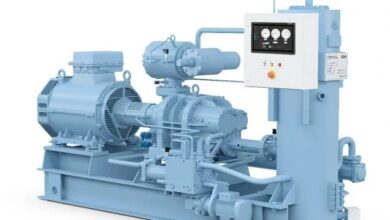Navigating the Future: Current Trends in Hydrogen Storage and Transportation Technology

Introduction
As the world shifts towards cleaner energy sources, hydrogen has emerged as a key player in the renewable energy sector. However, the efficient storage and transportation of hydrogen remain critical challenges that need addressing to fully utilize this resource. This article reviews the current trends in hydrogen storage and transportation technology, highlighting recent advancements and the potential pathways for future developments.
Current Status of Hydrogen Storage Technology
hydrogen storage is a crucial aspect of harnessing the full potential of hydrogen as a fuel source. There are several methods for storing hydrogen, each with its unique advantages and limitations.
Physical Storage: Compressed and Liquid Hydrogen
- Compressed Hydrogen: Currently, the most common method for storing hydrogen is in compressed gas form. Advanced composite materials are used for tanks that can withstand pressures up to 700 bar.
- Liquid Hydrogen: Hydrogen can also be stored as a cryogenic liquid at very low temperatures. This method is more space-efficient than compressed hydrogen but requires significant energy to maintain the low temperatures.
Chemical and Material-based Storage
- Metal Hydrides: Hydrogen can be stored in metal hydrides, where hydrogen molecules are absorbed into a metal matrix. This method is safer and more compact but has challenges in terms of weight and energy efficiency.
- Chemical Hydrogen Storage: This involves storing hydrogen in liquid carriers or through chemical reactions. While offering high storage density, these methods are often hindered by slow reaction rates and high operating temperatures.
Innovations in Hydrogen Transportation
Transporting hydrogen from production sites to points of use is as crucial as storing it. Here are some of the trending methods:
Pipeline Transportation
- Existing natural gas pipelines are being evaluated for their potential to transport hydrogen. New pipeline materials and technologies are also being developed to handle hydrogen’s unique properties.
Transport by Road, Rail, or Sea
- Road: Specialized high-pressure tube trailers are used for road transportation.
- Rail and Sea: Liquid hydrogen can be transported in large quantities by rail or sea, similar to how liquefied natural gas (LNG) is currently transported.
Emerging Trends and Future Outlook
Advanced Materials for Storage
Research is ongoing into novel materials like graphene and carbon nanotubes for hydrogen storage. These materials promise higher storage capacities and faster hydrogen release rates.
Hydrogen Refueling Infrastructure
Developing a robust refueling infrastructure is crucial for the adoption of hydrogen fuel cell vehicles. Efforts are being made to increase the number of hydrogen refueling stations and improve their efficiency and reliability.
Integration with Renewable Energy Sources
Linking hydrogen production and storage with renewable energy sources like solar and wind is a growing trend. This integration could lead to a more sustainable and consistent hydrogen supply.
Safety and Regulations
As hydrogen technologies advance, safety remains a paramount concern. Developing comprehensive safety guidelines and regulations is crucial for the widespread adoption of hydrogen storage and transportation technologies.
Conclusion
The efficient storage and transportation of hydrogen are vital for unlocking its potential as a clean and sustainable energy source. While challenges remain, ongoing research and technological advancements are steadily overcoming these hurdles. With continued innovation and investment, hydrogen storage and transportation technologies can play a significant role in shaping a sustainable energy future.





